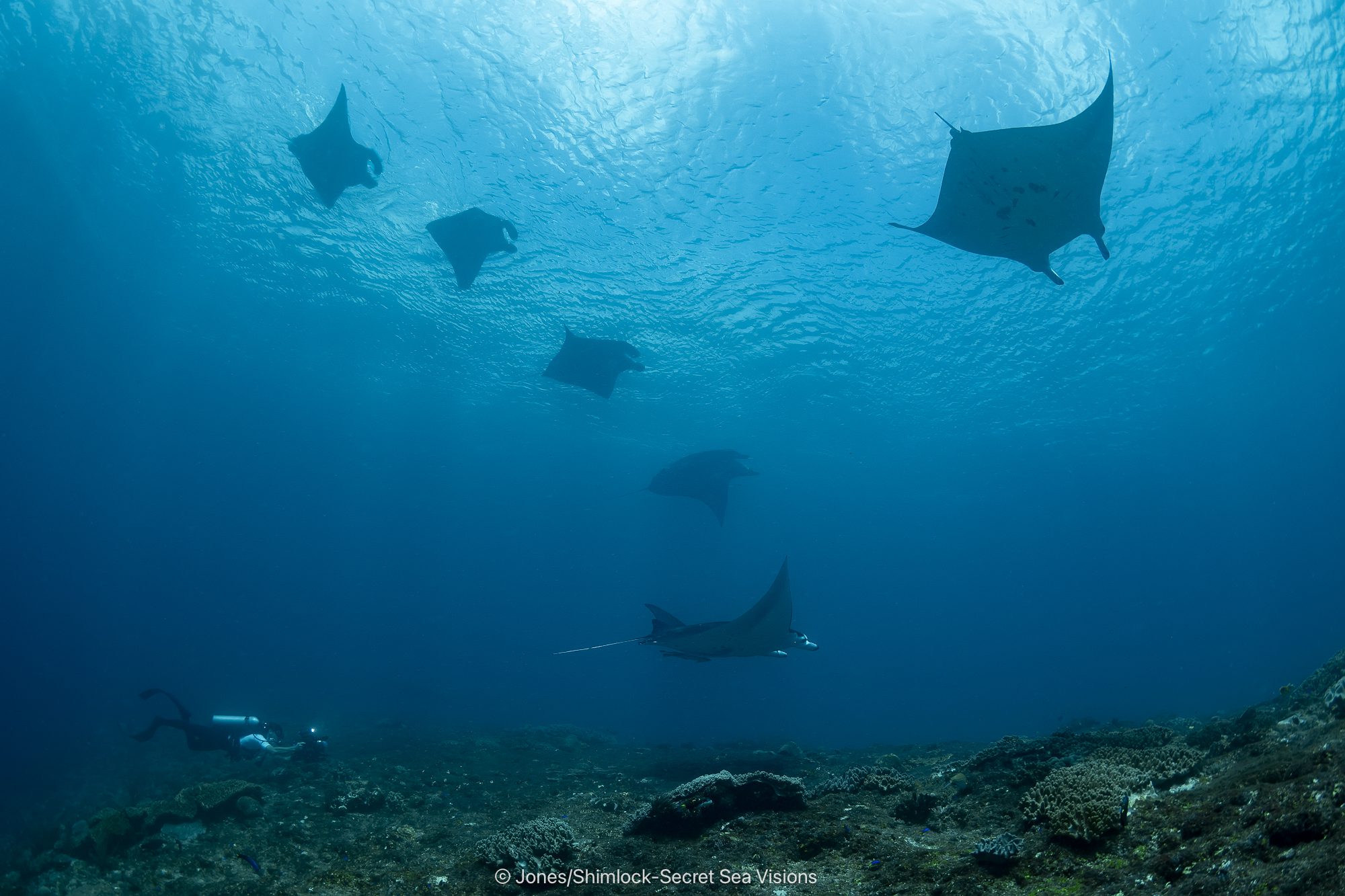Protecting our Oceans and Dive Sites while Benefiting Everyone
Administrator’s note: This article appeared in Undercurrent magazine (06/2025). It was adapted from the article in Forbes online entitled How Protected Marine Areas Could Bring $2.7 Billion To Scuba Tourism, by Emese Maczko.
The Scuba Diving Industry
Scuba Diving is driving a multi-billion-dollar industry, with over 50.7 million dives happening globally each year.
The latest research shows that upgrading all existing recreational dive sites to fully protected Marine Protected Areas (MPAs) could surge diving demand by 32% and generate an estimated $2.7 billion in additional annual revenue. The study was conducted by scientists from National Geographic Pristine Seas with help from PADI and its global marine conservation program, Adopt the Blue.
Note: There are 26 MPAs in the Birds Head Seascape, nine are in Raja Ampat. Read the article, Rewilding Coral Reefs that originally appeared in DAN’s Alert Diver magazine by Dr. Mark Erdmann, regarding the value and necessity of MPA’s in the process of re-wilding depleted species.
Divers Are Willing To Pay For Protected Sites
The study estimates that the median price of a dive is $58. However, findings show that divers would pay $112 for a dive inside a fully protected MPA, an additional $53, and, with the increased demand, nearly doubling the revenue to 3.81 billion.
Sixty-eight percent of dive sites are in an MPA, but only 15 percent are in highly or fully protected areas. Protecting just 15 percent more dive sites could increase revenue to $865 million annually.
Fully Protected MPAs Will Boost Marine Life
The study also estimates that fully protecting all unprotected dive sites could increase marine life (biomass) by 113 percent on average.
If governments allocate only 1 percent of the ocean areas used by divers to highly protected MPAs, the global biodiversity could increase by 5 percent. (Protecting the entire ocean, which is affected by global warming and pollution, would boost the biodiversity by 39 percent.)
Which Locations Could Be the Next Marine Protected Areas?
More than half of all recreational dives (52 percent) happen in eight countries: Egypt, Thailand, the United States, Indonesia, Australia, the Philippines, Mexico, and Malaysia. If new MPAs were to be created, 61 percent of the increased activity would be foreign tourists. The most likely areas are East Asia, the Pacific, Europe, Latin America, and the Caribbean.
All the above is great but…
The Hidden Problem Is Who Gets the Profits
While dive tourism may fuel economies in developing countries, the financial benefits often slip away from local communities because many diver operations are foreign-owned. As a result, a significant share of revenue never reaches local businesses or workers since these operators frequently employ nonlocal staff.
One solution could be for local governments or park authorities to impose a fee to maintain and protect the MPAs through a marine park entrance fee. For example, Raja Ampat in Indonesia levies a US$43 entrance fee. Bonaire National Marine Park charges $40 for an annual license.
How To Protect the Oceans Without Hurting Local Communities?
Designating a fully protected MPA means an outright ban on fishing, which is often a vital economic lifeline for many coastal communities. Without proper safeguards, these protections could do more harm than good, cutting off their earnings overnight. The challenge is not only about protecting marine life or increasing income from tourism but also about defending local livelihoods.
Can sustainable tourism fully replace fishing in coastal communities? How can governments ensure that income will reach local businesses, not just foreign operators? What policies should be in place to balance marine life protection and economic boom?
The future of the dive tourism industry, the health of our oceans, and the economic stability of coastal communities all depend on getting these answers right.





































